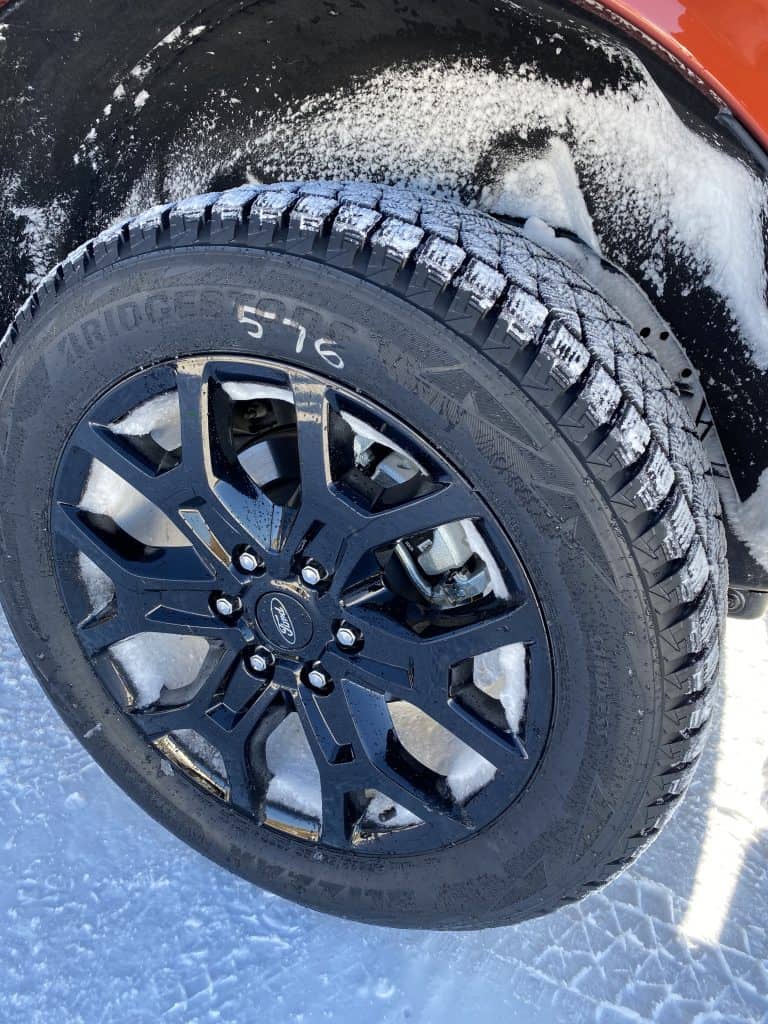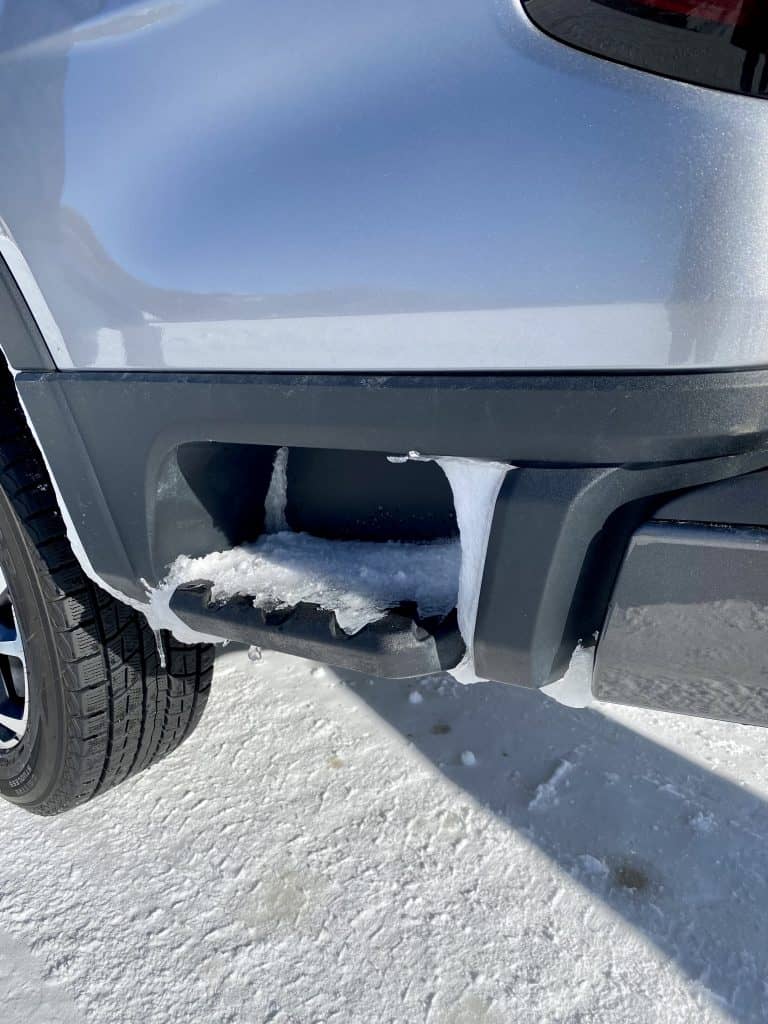SOMEWHERE VERY CLOSE TO THE SOUTH POLE, New Zealand—Fun fact 1: New Zealand is one of three countries closest to the South Pole (together with Chile and Argentina).
Fun fact 2: Winter in New Zealand is from June to September.
Which means that if you go to New Zealand in July, you better be packing really thick winter clothing. And wearing them in three to four layers.
Especially if you plan to go to New Zealand’s southernmost tip of Cardrona, where the Southern Hemisphere Proving Ground (SMPG) is located. SMPG is the award-winning automotive testing facility where car and tire manufacturers conduct their winter testing when they don’t want to wait for the usual December-to-March winter season in America and Europe. Temperatures at SMPG can go below zero—in daytime.
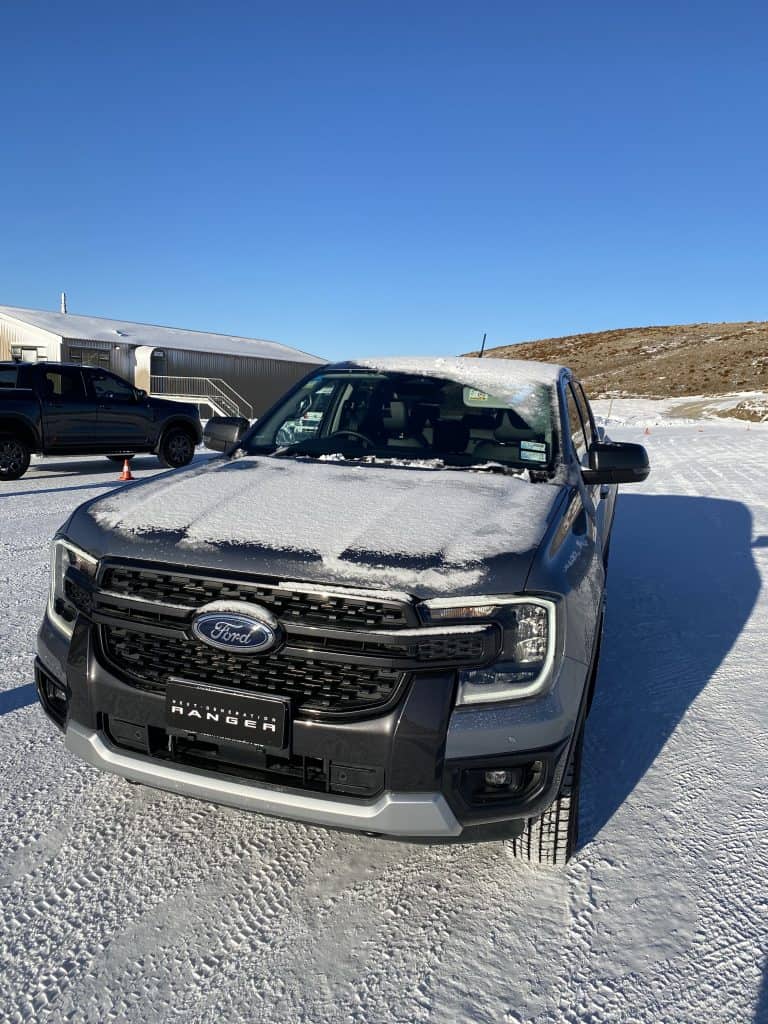
New Zealand is famous for having a tiny population (5 million), making faraway Cardrona seem almost deserted with a mere 770 humans living there.
Standing in the middle of the vast, sprawling, ice-covered proving ground with nary another person or animal in sight, you would think you landed on the far side of the moon. It is absolutely desolate and breathtakingly beautiful. There is not a single cloud in sight, making the landscape an endless expanse of white and blue.
That is until they rolled out a fleet of new-generation 4×4 Ford Rangers and Everests and lined the course with dozens of orange cones. You might already know that these Fords bristle with 210ps of power and 500 Newton-meters of torque from their mighty bi-turbo diesel engines mated to industry-leading 10-speed automatic transmissions.
Driving on ice with vehicles bursting with monster torque? This is going to be fun.
Safety mavens might think this is a recipe for disaster, but Ford took us through a safety briefing to ensure that all fun and games are well within pre-agreed safety limits and that safety features like traction and stability control are not deactivated (unless we’re told to do so). Ford also fitted all vehicles with studded snow tires, which gave them phenomenal traction on the hard, packed ice. We were not driving on wet glare ice so traction felt even better than when driving on wet asphalt, which we’re all used to. Still it was slippery enough that a few of us fell flat on our butts jumping down from the car or simply while walking. The most difficult part was having to make rapid left-right-left transitions on the steering wheel while wearing thick and heavy gloves and thick and bulky winter wear that made us look like the Michelin man. (And, for me, having to drive right-hand-drive vehicles as most of my Southeast Asian media colleagues were used to driving those.)
As mentioned all vehicles were 4x4s; we were not allowed to shift to 4×2 although—and this is the fun part—we were instructed to turn off stability control as many of the high-performance exercises involved drifting the vehicles rally-style, which is the fastest way to go through a slalom/autocross course. You can’t drift or go sideways if the stability control is on.
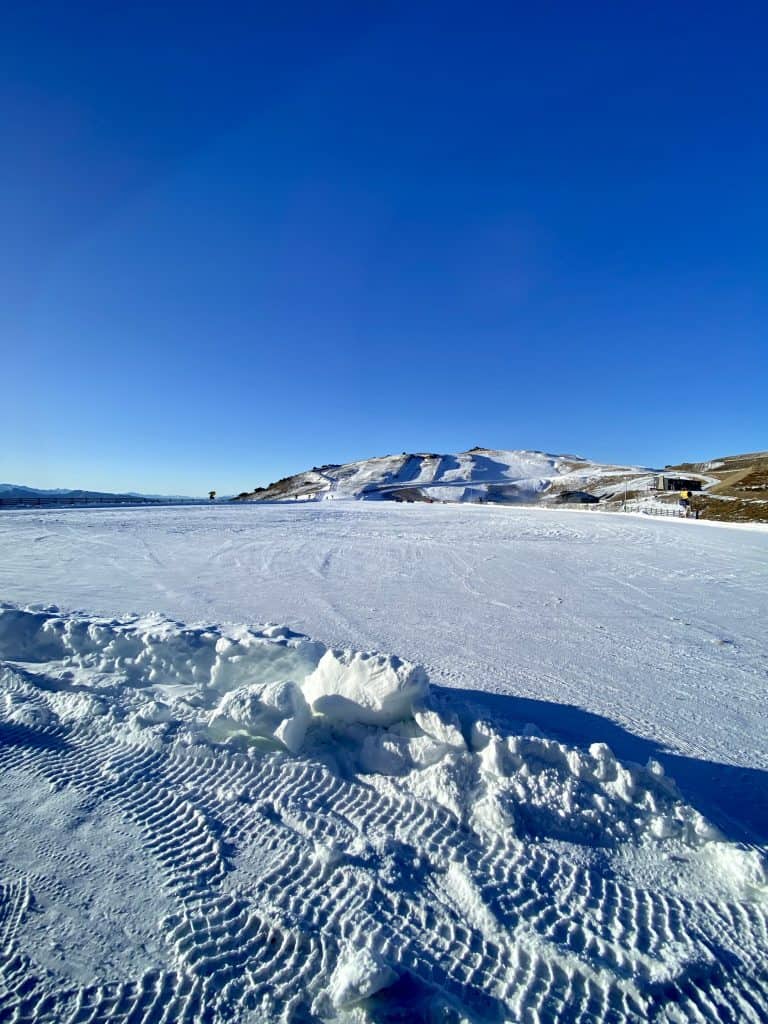
We started off with your basic 180-degree turn, not by making a simple u-turn, but by flicking the tail out, stunt-driver style. The learning curve among the more than dozen journalists on hand was varied. Some seemed to already know how to do it already while others managed to pummel a few orange cones in the process.
We got a lot more chances to refine our maneuvers when they arranged a figure-8 course wherein we’d do a 180-degree turn on one end, drive to the other end, and do another 180-degree turn there. We did that over and over until we pretty much perfected the maneuver. Soon, we were all looking like legit stunt drivers.
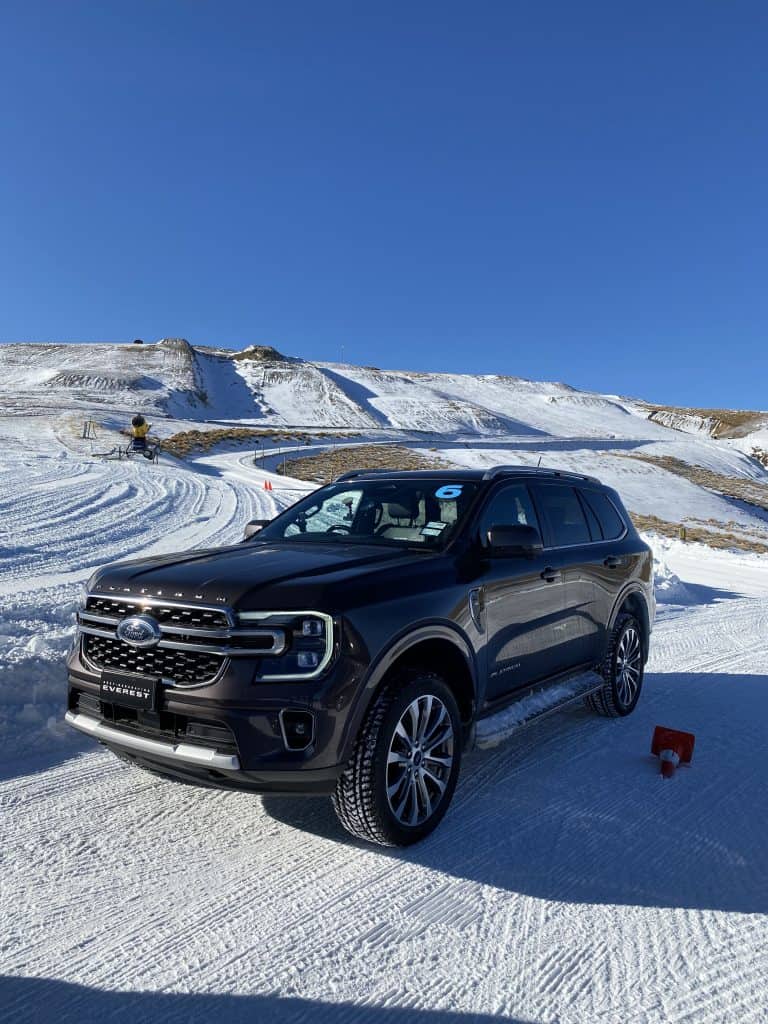
Mind you, it wasn’t easy at all, what with the strong grip of the snow tires and the inertia fighting the sideways movement of over 5,000 pounds of truck. Thankfully, the Everest and Ranger pump out their prodigious 500Nm of torque from as low as 1,750 rpm, so the right timing of forward motion (approximately 40 km/h), a sudden turn of the wheel to move the weight of the car on one side, followed by full-throttle (I can still hear the Australian instructor yelling on the walkie-talkie “Gas! Gas! Gas! Gas!) will get the tail to swing out. Then you have to continue sawing away at the wheel to get the vehicle to do a full donut around the cone (instead of just doing a 180 and ending up standing still in an about-face). It’s lots of hard work as the trucks don’t have the light and effortless power steering we’re used to in most small new cars. (The new-gen Everests and Rangers also have electric power steering, but the steering effort on these two-ton behemoths are obviously not calibrated to be as feather-light as what you’ll find in a tiny hatchback or subcompact.)
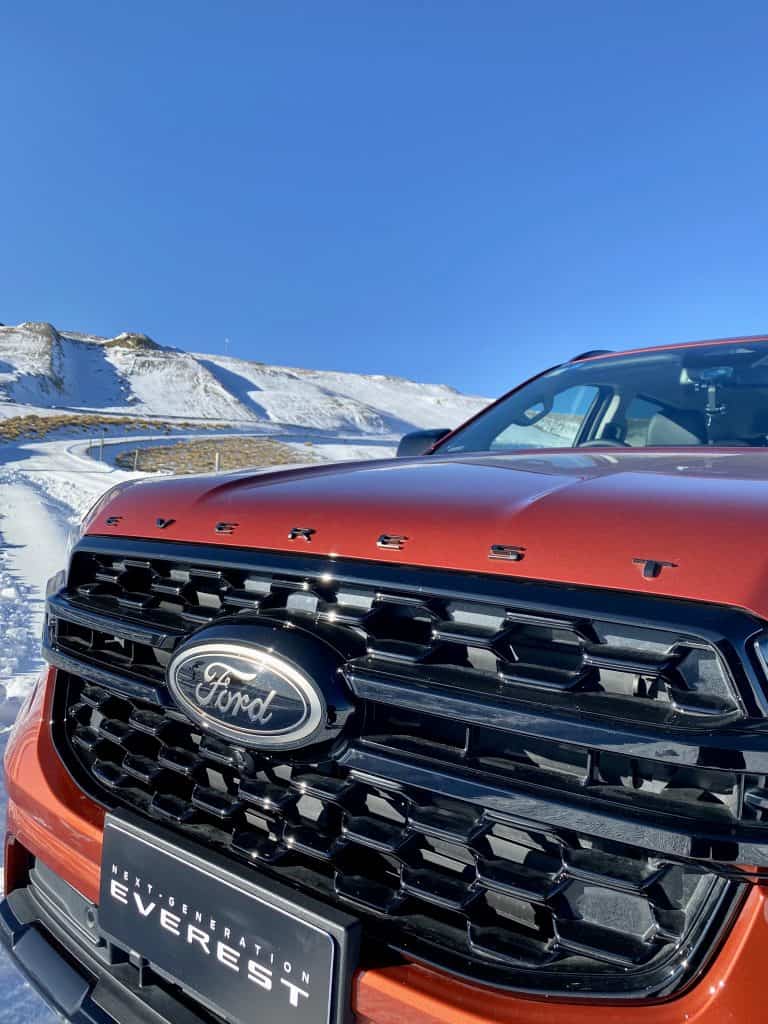
Then it was on to weaving through a slalom course until we finally graduated to the competition part—a full autocross course composed of a slalom, several chicanes that required a lot of extreme left or right directional changes, a couple of 180-degree donut turns, before rushing off to the finish line on the opposite direction and stopping squarely inside a section boxed in by orange cones. They only announced the results for the top 2 finishers, both of whom were young Thais (the faster of which was a professional race driver). Excuses, excuses, I know.
Of course, the true stars of the show were the Ford Everests and Rangers. You would think that driving in winter is a no-sweat affair. That would be true for humans, but for automobiles, that presents a completely different set of challenges. There is a reason all car makers use the Southern Hemisphere Proving Grounds (Lamborghini tested there two weeks after our ice-driving escapades), and that is to assess how their vehicles will perform in the opposite extreme of temperatures. Will the electronics function properly at below zero? Will the fuel and other fluids freeze up in their lines and reservoirs? Will the engine even be able to reach proper operating temperature? Will the climate control be effective enough to keep the occupants warm and comfortable?
All these questions—and more—were answered by the Everest and Ranger with a resounding “Yes!” Instead of the usual mud or dirt, the vehicles’ tires, alloy wheels, wheel wells, and even the step boards were packed with snow after many hours of intense high-performance driving.
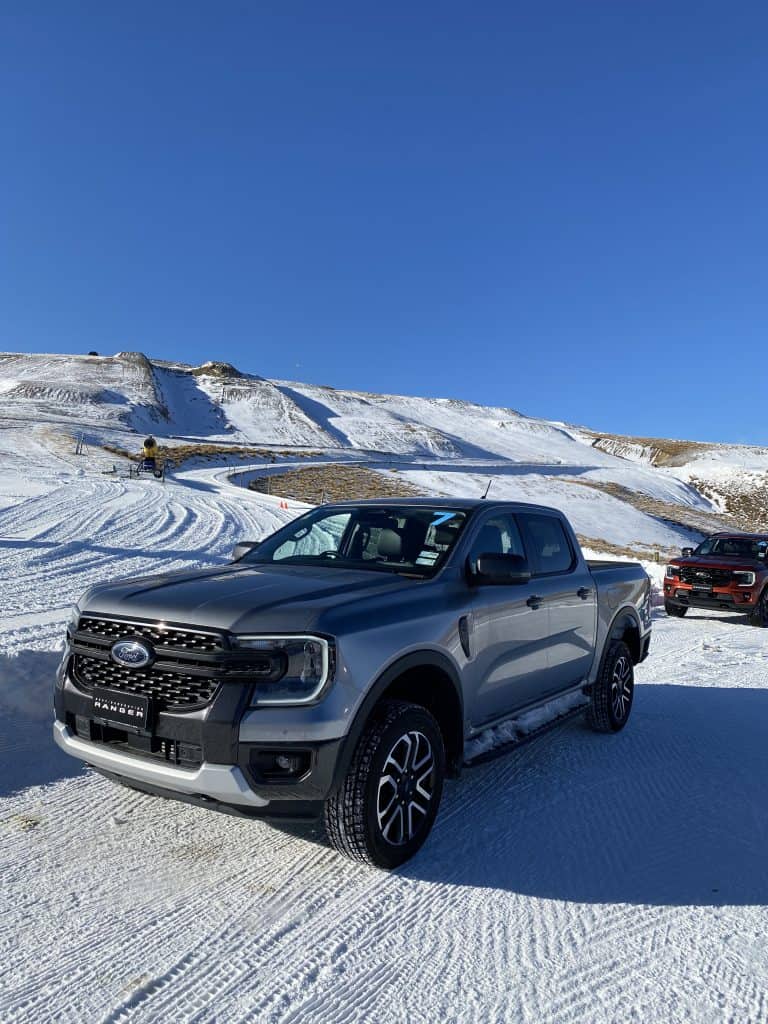
But as they sat on the ice after the event—their hot engines melting the ice on their hoods and seemingly every single cavity packed with snow—it was crystal clear, on this crystal clear day, just how over-engineered these rugged yet amazingly refined trucks are.
Despite all the trashing the trucks received from over a dozen journalists for the better part of a day, each one remained perfectly poised—ready to cocoon us in their luxuriously outfitted and feature-packed interiors—and prepared to receive many more rounds of whatever man and nature can dish out. And I haven’t even mentioned the mud and sand off-roading and the rocky river crossing we did the day before in more Rangers and Everests. But that’s another story.


